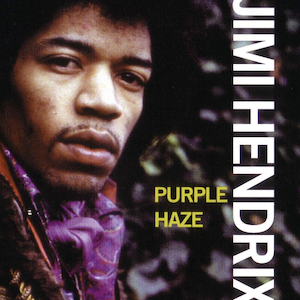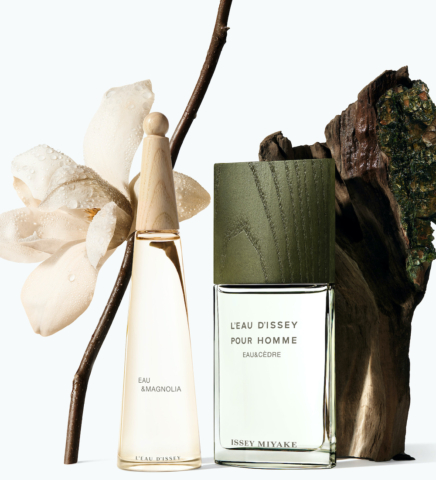Life’s Scent
By Pamela Oladipupo
A little town, Hiroshima, Japan, with two bridges; one used as a marker to shatter lives and another to commence healing. Bridges, seemingly simple to a stranger but holding the darkness, despair, loss, passion, dreams, and memories for others. For some, these bridges take you to a park or historic site, for others, they are a pathway to Ikiru (to live) and Shinu (to die). For one little boy in particular these bridges were his crossing into a world of fashion design and global recognition. Find out more about Life’s Scent Here.
Images Abi Perkins
For a little Japanese boy living in this fateful city in 1945, whose life changed forever by the dropping of a uranium-235 bomb called “Little Boy” weighing over 10,000 pounds, these bridges became the birthplace of his determination to make the most of whatever life he had left, fuelling his passionate pursuit of monozukuri – “the making of things”. This boy was none other than the internationally renowned fashion designer Issey Miyake who sadly passed away recently.
Issey Miyake is probably one of the greatest exports of Hiroshima, a city known primarily for the atrocities of the Atomic Bomb. On August 6 1945, a seven years old Issey was at school in a neighbouring town and was unaware that before long, Hiroshima would be covered in blinding lights, shockwaves and the rising of mushroom-shaped smoke that could be seen 45,000 feet from the sky, yet he did bare witness to it.
He ran to his family home 2.3 kilometres away, pulling his badly burnt mother from underneath debris and dead bodies. She died 3 years later when he was just 10 years old. He survived, lost friends and family to radiation, but went on to alter fashion internationally forever.
The two bridges which impacted Issey Miyake’s life are both connected to the Peace Memorial Park which is now a tourist attraction site in Hiroshima. These two bridges are the Aioi bridge and the peace bridge. While the Aioi bridge which was used as a marker to drop a bomb in 1945 connects the peace memorial park to the rest of the city on the North side, the Peace bridge used to commence the building of the park, connects the Peace memorial park to the rest of the city on the south side.
In love with painting, he found inspiration on the peace bridge on his way to painting class. The Peace bridges’ handrails were built by his hero Isamu Noguchi, a sculptor who devoted his life’s work towards odes and requiems for Hiroshima. On the East rail stood a flower-like newel cap looking upwards as if basking in the sun symbolizing Ikiru/Tsukuru (to live/arrive) while on the west rail was a similar newel cap bent downwards as if withered and bowed in death, symbolizing Shinu/Yuku (to die/depart).
It was Miyake’s fate that while the Aioi bridge disrupted and changed the perspective of life as he knew it, the Peace bridge brought to him architectural art and fashion. Lit with a fire in him regarding design, he went on to enrol in graphic design at Tama Art University in Tokyo to appease his father because his first love was in fact fashion, and training in fashion would not have been approved of at that time.
When presented with an opportunity to leave Japan, he went on to pursue his passion for clothing in Paris, shocking France with his unconventional approach to design. Issey Miyake not only influenced the West by melding his distinct Japanese heritage into modern Western fashion, but equally influenced Japan, his home country into being receptive to combining traditions with modernity and western influences into its heritage as the Japan he grew up in, was conservative and steeped in its traditions.
He was passionate about pushing past the limits of life and all its possibilities. He approached fashion not as fashion, but as making things for living life, and for fostering a relationship between clothes and people by invoking their creativity in wearing his clothes.
Issey Miyake was very adept at applying the simplicity of Japanese culture towards cultivating new normals yet, his creations were anything but simplistic. Issey’s intrigue with life, reality, and beauty in the unfinished and overlooked influenced him to not only create life-altering clothes and fabrics but equally to create life’s scent. His perfume draws from the natural scent of the human skin combined with lotuses and roses. At the time he ventured into perfumes, scents were very floral, busy, heady and rich and in typical Issey fashion, he broke the mould.
As personal as his fashion work was, so was his relationship to scent. In the Japanese culture he grew up in, people did not wear perfumes much as culturally, it was seen to impose on others’ space. In creating scents, he incorporated this ideology, opting to create scents that were not overpowering but rather as natural as possible to the combined smell of water and skin.
He incorporates flowers such as lotuses, roses, and peonies, some of which are integral parts of the traditional Japanese culture. It is not a coincidence also that these flowers under the Japanese interpretation of flowers and colours are equally vital to realizing these pure aquatic scents. For example, the lotus is held to symbolize purity of the body, speech, and mind; white roses symbolize innocence, devotion and silence while peonies symbolize bravery, good fortune and honour.
His first scent, l’Eau d’Issey was launched in 1992 with details that capture the essence of Issey Miyake in a bottle that is equally designed to be uniquely him. This perfume was revolutionary, totally almost inventing a new family of fragrances- water-inspired skin-inspired – and blew away the old market of heady rich sometimes even sickly perfumes. His take on florals was intimate, delicate, personal and fresh.
He made use of a generous amount of Calone – a synthetic discovered by pfizer in 1951 during its search for a food additive to provide the flavour and aroma of watermelon. Calone gives the scent of sea breeze and while it was not new to the market, the quantity incorporated into the l’Eau d’Issey together with the approach of creating a natural scent of skin and water, was in the 1990s and earlier, not the traditional or conventional way of perfumery and scents. In addition, it made use of two contradictory flowers, the lotus and rose.
The bottle of the l’Eau d’Issey was influenced by Issey’s interpretation of the moon and the Eiffel tower of Paris. The Fragrance itself comprises prominent notes of Lotus, Freesia and Rose with Osmanthus, middle notes of Lily and base notes of Sandalwood, Cedar, Ambrette. Indeed, l’Eau d’Issey‘s essence from its bottling and content is picturesque of a person seated at a vantage point gently embraced by the moon and gold glows of fireflies, creating ripples around the clear water and coated in love, purity, romance and sweet nectars.
It has been 30 years since its debut and the scent has developed from just life’s scent to a connection of souls and expression of nature’s language between artistic collaborators and the house of Miyake. In celebration of its 30th anniversary, Elisa Valenzuela and Luiz Zerbini have ingeniously expressed odes to nature’s beauty through two variations of the l’Eau d’Issey – L’Eau d’Issey Eau & Magnolia and L’Eau d’Issey pour Homme Eau & Cèdre. This becomes even more relevant in today’s world where there is the desire to protect and experience nature.
The men’s collection debuted in 1994 with the l’Eau d’Issey Pour Homme. Its top notes comprise Yuzu, Cypress, Coriander, Mandarin, Clary Sage, and Fresh Verbena. The heart notes are Blue Water Lily, Nutmeg, Saffron, Bourbon Geranium, and Ceylonese Cinnamon while its base notes are Tobacco Amber, Musk, Indian Sandalwood, Haitian Vetiver and Cypriol. Its bottle when tilted to the side, looks like its female counterpart.
Subsequent perfumes produced over the years are l’Eau d’Issey Rose & Rose Intense with its main note being pink pepper, Nectar d’Issey Premiere Fleur with main notes of pear and fruit for women and Fusion d’Issey Extreme with top notes of Bergamot and Cardamom, l’Eau d’Issey Pour Homme Wood & Wood Intense and l’Eau d’Issey Pour Homme Sport for men. All scents come in Eau de parfum and Eau de toilette.
It may seem like there is a limit to chasing and bottling nature in its near original state yet Issey Miyake as a brand continues to prove that limit is not a word they wish to embrace as part of their vocabulary and puts this stand into action with the newly launched A Drop d’Issey Eau de Parfum Fraîche.

The perfume bottles up the scent of raindrops in springtime, catching all the elements which bestowed their kisses and embraces on the raindrop from its departure from the sky to its final resting place on the grass, flower or bark of a tree, as if viewed through a magnifying glass. It applauds and worships the seemingly simplistic yet whole complexity that is nature.
Every detail has been painstakingly intentional in this scent. Dreamed up by Ane Ayo, a perfumer at Firmenich, the scent introduces a new tender and fresh floral signature, creating a contemporary twist on the brand’s signature aquatic note. The scent reflects the journey of the raindrop, embracing a mix of various colourful flowers it comes into contact with during its descent. It includes the Lilac accord, an emblem of the original A drop d’Issey, entwined with Damask Rose. The scent ends with the smell of these drops on woods; crisp Cedar and a creamy Sandalwood accord, extending onto a base of white musks where it stays emitting its long-lasting power.
The bottle of the scent designed by Todd Bracher embodies the name of the scent. Shaped like a raindrop, it reflects the view of a forest through the lens of this single drop of water. It incorporates the azure blue of the sky to the vibrant green of grasses in the wind with a striking metallic blue-green finish that adorns the box.
As is Miyake’s style, the drop Eau Fraiche aims for the wearer to please oneself rather than others, to embrace the childlike freedom of standing outdoors or by the windows with arms stretched and heads raised, inhaling the first touch of the rain on the earth. In addition, the scent does not just bottle up nature in name only but also in its content. The perfume itself is vegan while the bottle is 5% recyclable glass, keeping alive the satisfaction of bottling up the pleasures and vibrancy of nature while preserving nature itself.
Despair marked by a bridge and a dream evoked by another has brought to the world 77 years of legacy, connectedness, laughter, childlike freedom, life’s essence and monozukuri, all of which have shown no intention of burning out.
When next you pass by a bridge, remember that it was the starting point for a little boy, to connect hearts with nature, souls with expression and intentionality with passions. It was a place where Issey Miyake dreamed of his change into the making of things and the creation of life’s scent.
To find out more about all the Issey Miyake Perfumes please go to IsseyMiyakePerfumes.com Here
If you enjoyed reading Life’s Scent Here why not try reading Installed Here
.Cent magazine London, Be Inspired; Get Involved





